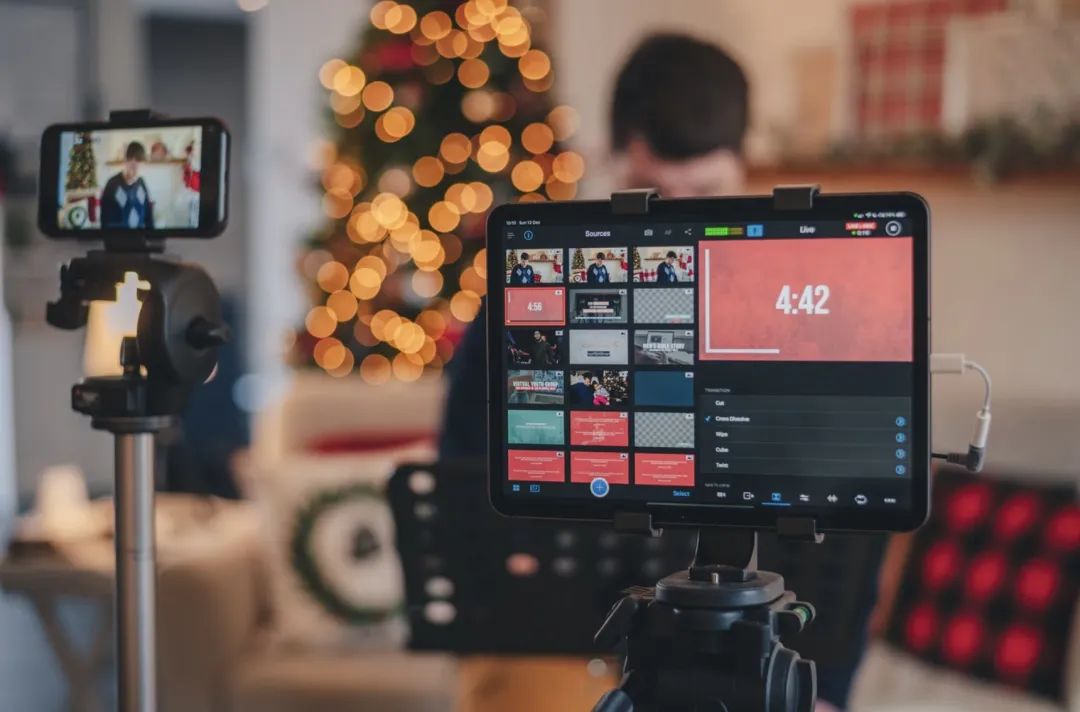Hu Zhengrong, Director of the Institute of Journalism and Communication of the Chinese Academy of Social Sciences | Empowerment of mutual empowerment: media integration and cross -screen audiovisual ecology
Author:Dengyun Time:2022.08.11



On August 10, the third China short video conference with the theme of "main position · main battlefield · cutting -edge" opened at the Fuzhou Changle Digital China Convention and Exhibition Center. The conference was jointly organized by the State Administration of Radio and Television, the Fujian Provincial People's Government, and the China Radio and Television Social Organization Federation, the Fujian Radio and Television Bureau, the Fuzhou People's Government, the Fuzhou New District Management Committee, and the Fujian Broadcasting Film and Television Group.
Where is the new position of mainstream public opinion? Among them, the 3rd China Short Video Conference · WeChat Video Special Forum gave the answer. Participating media representatives and experts and scholars stated that based on WeChat -based ecological scenes, the video number brought unique value to the media integration and innovation of the media, the construction of a cross -screen ecology, and the transmission of positive energy of the society. The mainstream media opened a new high place in public opinion in the video number.
The following is the full text of speech by Professor Hu Zhengrong, director of the Institute of Journalism and Communication of the Chinese Academy of Social Sciences and Professor Hu Zhengrong, Dean of the School of Journalism and Communication of the Chinese Academy of Social Sciences:
Dear leaders, guests, good afternoon!
First of all, on behalf of the Institute of Journalism and Communication of the Chinese Academy of Social Sciences, and the School of Journalism and Communication of the University of China, I held warm congratulations to the victory of the 3rd China Short Video Conference! The theme of this conference is very close to the current reality and the main positions, the main battlefield, and the most cutting -edge content in our research, because we do pay attention to and study audiovisual ecology, especially the short video. Here, the topic I shared is "Empowerment: New Ecology of Media Integration and Cross -screen Audiovisual Ecology".
On August 18, 2014, after passing the media integration related documents in the Central Reform Group, the media fusion in the country has been in full swing in the past eight years. The media fusion actually created more media development opportunities. Of course, it also accepted the new media platform to give us more challenges. Today I want to talk about three aspects:
The first is to empower each other. Mutual ability mainly means that the integration of media is a very important and huge driving force for the audiovisual industry. Under this driving force, the entire audio -visual industry has undergone tremendous changes. From the past, it can only be seen based on large screens. Video iterations have become short videos, medium videos, and long videos. The length, channels, platforms and scenes of the video become richer and diverse. Second, from the perspective of the evolution of the audiovisual platform, this evolution has actually undergone historical development. This is the conclusion I have been engaged in related research for a long time. The third is to discuss future development around the iteration of the audiovisual ecology.
First, empower each other. I added two words after the title of "mutual empowerment": one is "media fusion driver". The media integration is actually a huge push and driving force for the entire audiovisual industry. Due to media integration, both traditional flat media and radio and television media are developing in the direction of audiovisual media. After the form, expression channels, and formalization, everyone thinks more about audiovisual methods in the entire creativity and content presentation, because audiovisual is the most convenient and most common means. Today on the Internet, 90%of the Internet traffic is audiovisual traffic, so it is not clear that the future direction of media integration will not be developed without the development of audiovisual. This is an empowerment, that is, the integration of the audiovisual, allowing it to produce more new forms and new ecology.
Conversely, the audio -visual ecology has also created a lot of new opportunities for the media. For example, we all know that since the use of the Internet, emerging media, especially social media, the new audio -visual ecology has become increasingly growing. The most typical of which is the rapid outbreak of short videos and various audiovisual platforms. The outbreak of this kind of audiovisual platform and audiovisual products has brought more new opportunities to the media integration.

This is the first point I want to tell you, that is, whether we know the media integration or the new ecosystem of the audiovisual, we will find that the relationship between the two is not who empowers who, but a process of empowering each other. As a result, we have to seize its key. Since it is empowerment, in fact, the two can grow each other in this process. All media integrate to catch new audiovisual platforms and seize new audiovisual opportunities and formats. On the other hand, all the audiovisual ecology still provides us with more communication channels, platforms, and communication methods based on media integration.
Second, the evolution of the audiovisual platform. The evolution of the audiovisual platform has actually undergone a historical change. Six years ago, I first put forward such a point at the conference of the Chengdu Asia Radio and Television Alliance: the history of human audiovisual communication can be divided into four development stages based on screen medium.
In the first stage, we are called a single -screen era or single -screen stage. The single -screen stage is well understood, because there was only one screen at that time, such as entering the cinema to watch movies. The movie was the earliest screen, and then there was a TV.
The second stage is the multi -screen era. The multi -screen era has begun in the later period of the industrial revolution. For example, with the movie screen and TV screen, the PC era also had computers. After the 21st century, we had mobile phones, and then smartphones. Therefore, the emergence of the multi -screen era means that human beings perceive and understand the outside world through the screen, and the channels of the screen are very diverse. So we can say a word: We live in a brand new multi -screen world. People can watch small screens or large screens. The smaller the screen, the more frequent people use, and the more time it takes. The larger the screen, the less frequent people use, the less time it is used.
The third stage is the moment, we have entered a cross -screen era. What does the cross -screen era mean? That is, we now have large -screen movies, large -screen TVs, mid -screen computers, small -screen phones, and even various video platforms with various screens, but ordinary people switch between each platform, on every one, every platform, every platform, every platform, every platform Switching between screens is very cumbersome. In the multi -screen era, each screen is not related. The scenes, users, data, content, and services of the screen are split. It cannot penetrate the user throughout the scene and enhance the user experience. In the cross -screen era, its background logic is opened, and the front desk consumption is also opened. In a word we usually say, open all the screens in an account, so that users can, anywhere (Anywhere), in any way, that is, whether it is on the mobile phone, the computer, the computer Looking at, on TV, and even the next step, all kinds of audio -visual media and platforms are an account, one -click through the world. We now see that the video number made by Tencent is actually a very meaningful attempt to make in cross -screen. For example, what can be seen on the TV station can also be seen on the video public account and video number on the TV station. However, after entering such a cross -screen era, the problem came. First of all, how to solve one -click or one account opening, and at the same time, how to solve all these problems on platforms, users, scenes, product chains, supply chains, and value chains around such a cross -screen ecology.
In the fourth stage, we are about to enter the screenless era. When I put forward this view in 2016, many people do not understand, how could it be possible to enter the screenless era? At that time, when we talked about immersive holographic images, many people understood it. But when you talk about this today, you can put it in a word. When you mention a concept, everyone can realize it — the Yuan universe. Since the Yuan universe is a basic way of presenting the Internet 3.0 or a basic way to understand the world, express the world, and consumer world, it can be understood as the core of the Yuan universe is to use digital technology to use digital technology twin Numbers are in front of you, completely immersive images, allowing you to get an effective experience in a holographic image without screen.
From the development process of human video consumption or audiovisual consumption, it has actually passed the four stages: from single -screen to multi -screen, and from multi -screen is entering the inter -screen era. How to challenge is how to enter a screenless era from the cross -screen era.
Third, build a new ecosystem of audiovisual, namely a new ecosystem of cross -screen. Now that the audiovisual ecology is based on different screens to evolve, iterates, and update along the platform, then it has now entered the cross -screen era. Each screen is the government. Can this audiovisual format be larger? This is not big. Traditional audiovisuals are based on large screens to build an ecosystem. So far, some people are still asking for building an ecosystem based on large screens.
I think this view itself is in the industrial age, which is wrong. In fact, from 2.0 to 3.0, we have to install a smart ecosystem and intelligent audiovisual ecosystem in our minds. The so -called intelligent audiovisual ecosystem is entirely based on 5G, artificial intelligence -based technology to reconstruct a audiovisual system, and this audiovisual system must focus on building a cross -screen or even screenless ecosystem from today. Build a concept of a small -screen ecosystem or build a large -screen ecosystem. At present, we have to build a cross -screen ecosystem. The next step we want to build a screenless ecosystem.
All audiovisual practitioners, all audiovisual platforms, and all audiovisual consumers, have you prepared for the cross -screen ecology? A large number of stakeholders in an ecosystem. Are all stakeholders preparing for the cross -screen ecology? How to prepare for cross -screen ecology from today? I think at least five aspects need to be very big:

The first is to open up the audiovisual media. This means that the background logic and back -end system must be associated. For example, you can't watch a large screen with an account, look at the screen PC side with an account, and use a small screen mobile phone to use another account. According to the requirements of the central document, the Internet is now the main battlefield and the mobile terminal is the main channel, so it is necessary to re -construct the development logic of all audiovisual media in the background based on the main channels such as the mobile terminal. The basic logic of this development is one -click in the background and terminals, or a account to open up all the audiovisual media platforms. This has a very severe challenge for the supervision of our entire audiovisual industry, the future of the new audiovisual industry, and even the audiovisual industry.
The second is that audiovisual products are derived from each other. This means that under a very good IP, under a very good creativity, you can produce long videos, large screens, and producing videos, PCs, and even short videos and mobile phones. Therefore, the mutual derivation of this audiovisual product brings us opportunities to create more forms, create greater value and longer end effects.
The third is the audiovisual platform empowerment. Just like the TV station opens an account on the Tencent video number, you can spread my product twice, three times, and N times, so this audiovisual platform must be empowered each other. Essence
The fourth is the migration of audiovisual users. Everyone may be unfamiliar with this concept. What is "migrating each other"? We often hear the first network background, and we also hear a new concept "Synchronous", that is, the video broadcast on the Internet and the videos broadcast on the cinema are synchronized. This in the United States has been realized. The "first network and backstage" often mentioned in China refers to this concept. Users make them migrate and migrate each other due to diversion functions on different platforms. The fifth is the integration of audiovisual scenes. In the exercise, walking, work, diet, and rest, we must create him in different scenarios to create audiovisual products and audiovisual channels that can reach him, or to infiltrate his audiovisual products and audiovisual channels. In this way, our cross -screen ecology is enough to structure.
However, the core of the real construction of a new across -screen audiovisual ecosystem is to open the three industrial chains. The first is the product chain. The long, middle, and shortness form a product chain that can be opened in scale and scope of scale, forming a product matrix. Secondly, we need to create a considerable supply chain around this product chain. This supply chain needs to be more supply and two -way supply. For example, PGCs such as TV stations need to produce content to provide small screens, large screens, mid -screens, etc. PUGC and UGC may develop in this direction in the future. Finally, our value chain can be opened.
Finally, I made another summary. The traditional audiovisual is basically based on a large screen, because at that time, the medium was single, the content channels and services were a closed -loop system, so the creation value was relatively smaller. But the cross -screen ecosystem we are to construct now and the screenless ecosystem we must build in the future are an open, cross -border system.

This system includes both content suppliers and operators of various vertical scenarios and services, as well as platform vendors like Tencent, as well as a large number of hardware vendors, and all industries and formats that match it. Our multi -channel and multi -mode state to create value provides more possibilities. We are particularly looking forward to working together for the future. Based on media integration and new audiovisual ecology, starting from today, we will build a cross -screen ecosystem to prepare for the future entering the screenless ecosystem.
- END -
98!The latest list of central enterprises announced

A few days ago, the website of the State -owned Assets Supervision and Administrat...
"No. 39 Video" Tangshan Women's Real -name Report Vice President "Hire the under

JPEG Webkit-Playsinline On June 12, in Tangshan, Hebei, a woman claimed that she...